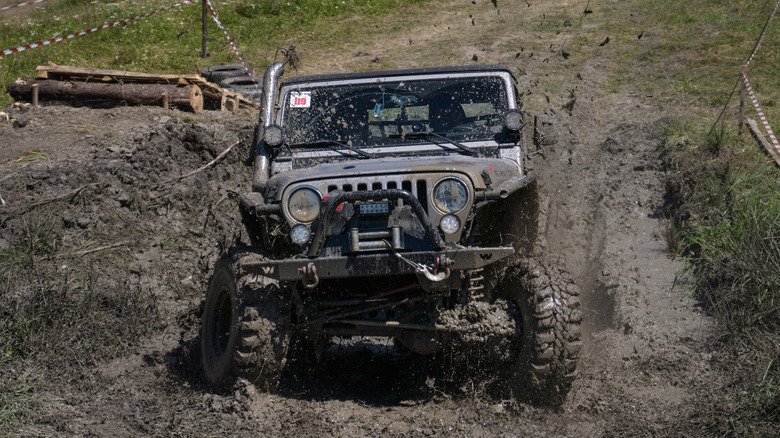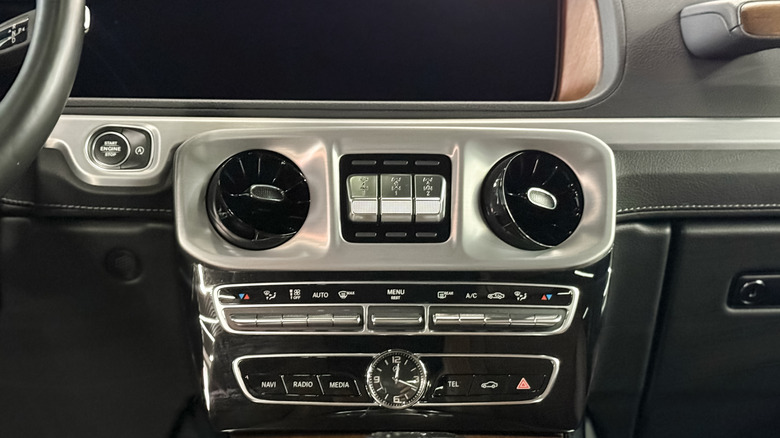Why You Should Avoid Driving On Roads With Diff Locks On
Driving with the diff lock engaged on dry pavement isn't just a bad habit. It's a quick way to strain your drivetrain and make the whole car feel off. The tighter the corner, the worse it gets. Your differential normally lets each wheel spin at the speed it needs — slower on the inside, faster on the outside. With the diff locked, both sides are forced to turn together, which means they fight each other through corners, building up stress and tension in the process.
That's what causes the car to shudder or skip. You'll feel it jerk, and you might even hear a loud clunk from underneath. That's not harmless noise, but rather your drivetrain suffering from mechanical strain building up in the axles and gears. Over time, this stress begins to crack seals, chew up tires fast, and it might even snap something expensive like pinion gears or the carrier assembly.
In order to prevent accelerated wear, courses such as Basic Off-Road Training by OffroadExperience.eu emphasize differential disengagement on paved terrain, avoiding overload. Furthermore, locking the diff on high-traction terrain only accelerates the damage. Some people don't notice it right away, but it all adds up fast. The car might feel jumpy in parking lots, tug strangely through roundabouts, or drag its inside wheels.
What a differential lock actually does
Your differential isn't just there to spin the wheels. It's there to control how fast each wheel turns, especially when taking a turn. The inside wheel always travels a shorter path, so it spins slower. That's normal, and it's practically what the differential does without you ever noticing it.
Locking the differential changes that. Both wheels are forced to spin at the same speed, even when they shouldn't. That's great when one of your wheels is stuck in the mud and the other has some grip. With the diff lock on, power is distributed evenly to both wheels, helping you push through. On pavement, however, it's a whole different story. Grip becomes the enemy as the tires resist turning together, straining the drivetrain.
You'll find diff locks in serious off-road vehicles. In many trucks and SUVs, the lock can be turned on manually with a lever, or an electronic axle-lock switch, like in the Jeep Wrangler. Some, like the GMC Sierra, do it automatically, depending on terrain and traction, but the concept is still the same. Locking gives you traction where an open diff would just spin a wheel and lose momentum. While it is useful in tough conditions, that isn't really the case on dry roads, as the more traction you have, the more locking the diff works against you and creates unnecessary strain.
How to use diff lock the right way
Diff lock isn't something you can always leave on, like a drive mode setting or similar. It should be used when you're losing grip, not when you're already back on solid ground. Think deep mud, snow, loose gravel, or rocky climbs. That's where one wheel might lift or spin freely, and locking the diff is what will keep the other wheel pulling, helping you retain momentum and avoid digging yourself deeper, but this only works at low speed. Having the lock on while you're moving too fast can slam the gears and increase damage risk.
Once you're through the tough patch, turn it off. The drivetrain isn't built to twist against itself on dry surfaces. If you're hearing a tire squeal or the steering feels tight, it could mean you've left the lock on too long, and it's time to check that.
Most manuals will tell you exactly how your system works. Some locks need the vehicle to roll a little to disengage, while others click out clean. If you're not sure, consult your car's owner's manual. It could mean the difference between getting out clean and breaking something costly and avoidable. Changing your differential oil on time is also very important.


